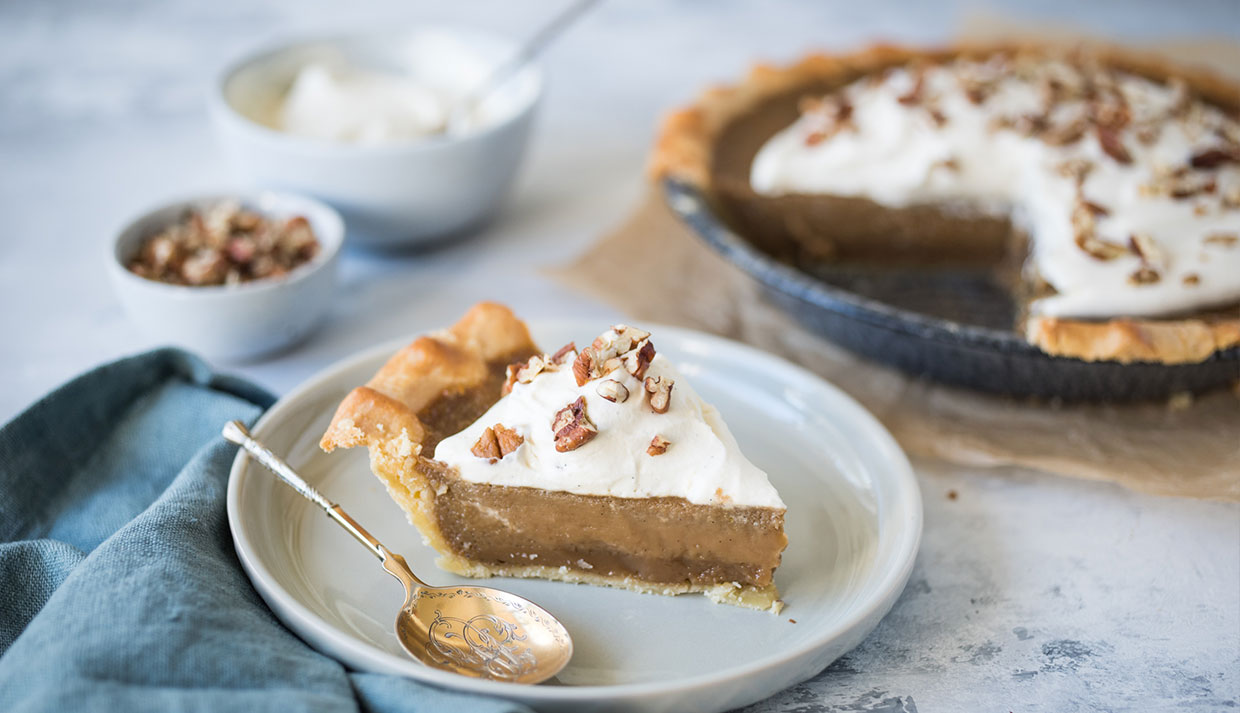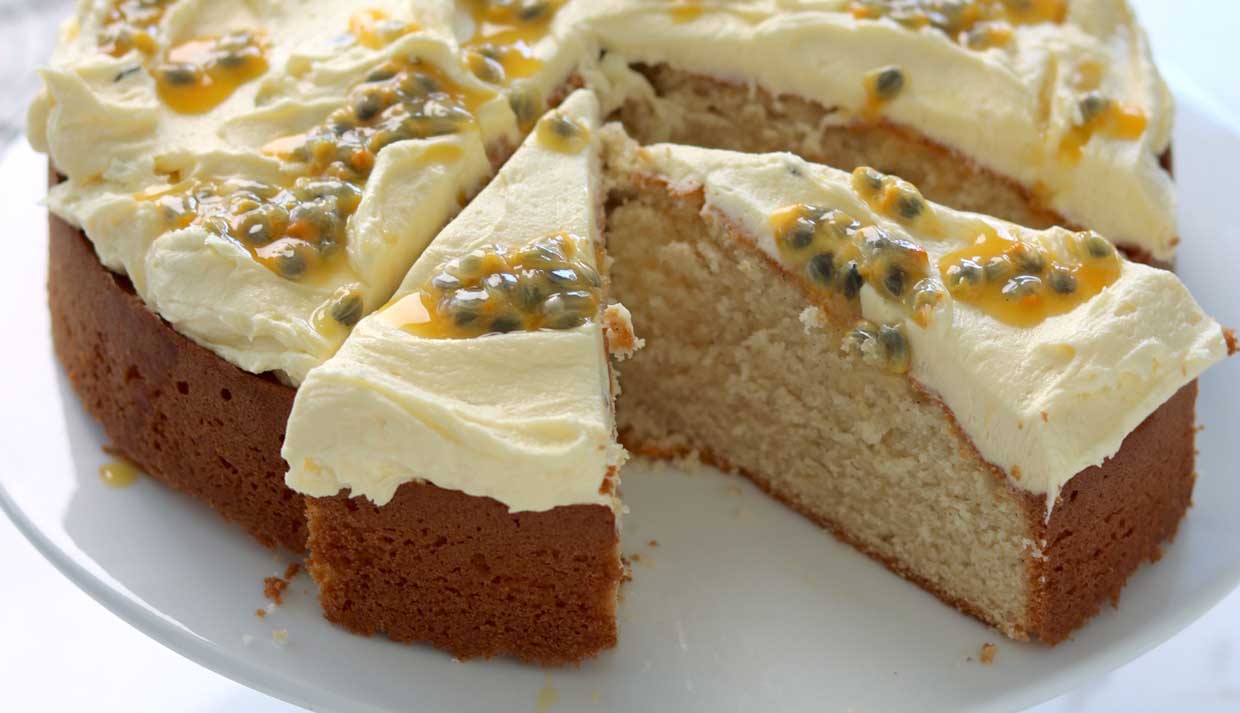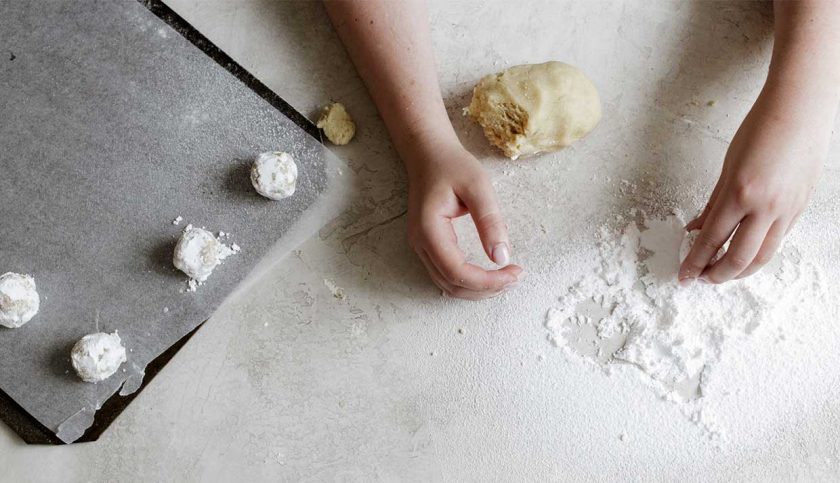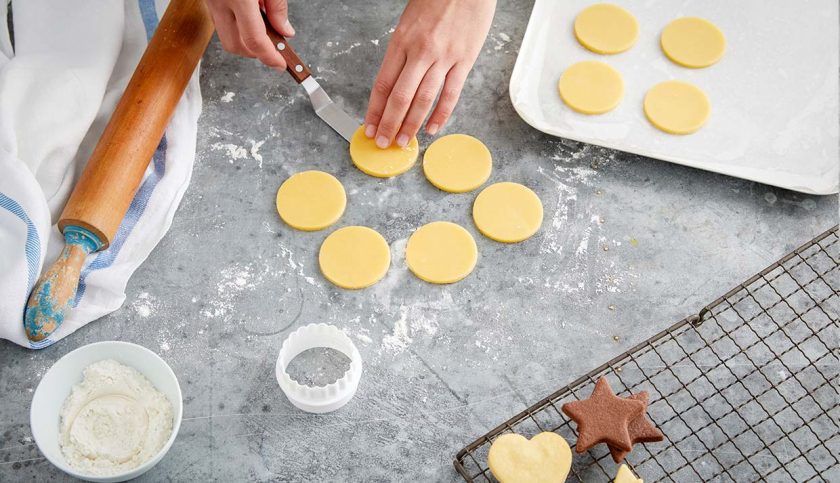Q: Why do my ingredients need to be room temperature?
Cold ingredients are often the cause of lumpy cheesecakes, sponge cakes that fail to rise to the occasion, and the dreaded sunken Pavlova. To put it simply, cold ingredients just don’t incorporate as easily or aerate the same way as room temperature ingredients. Cold butter won’t cream and cold eggs won’t provide the correct structure, so be sure to grab your ingredients out of the fridge well before you start baking or use the following tips!
Q: How can I bring eggs to room temperature quickly?
It’s easy! Place your eggs in a bowl and cover completely with warm water. They should come to room temperature in about 10 minutes. Dry them off and bake away.
Q: How can I soften butter quickly?
Grate or chop finely – Doing this increases the butter’s surface area, exposing it to the warmer air, allowing it to softening it in no time.
Microwave on a low setting (and keep a close eye!) – Pop your butter in a microwave-safe bowl and switch the settings on your microwave to 50% power or “low”. Heat in 20 second increments until your butter is soft to the touch, but not completely melted. Be careful as your butter will soften from the inside first.
Q: What is softened vs room temperature butter?
While they are technically considered the same thing, for those of us baking in Australia “room temperature” can also mean a greasy puddle on the bench. Room temperature or softened butter simply means that when pressed lightly, your finger will create an indention while the rest of the butter still holds its shape. Avoid butter that is too warm, as once it looks shiny and oily it won’t function in the same way (and might lead to a bake fail!)
Q: Why do you need cold butter when making pastry or pie crusts?
Cold butter is useful in recipes where you don’t want the butter to be absorbed by other ingredients. This is especially true for pastry and scones. Cold butter remains intact and unincorporated in the dough, preventing the development of gluten and creating flaky layers and delicious pockets in your pastry.
Q: I don’t have any buttermilk, can I substitute or make my own buttermilk?
You sure can! To make your own buttermilk, mix 1 tablespoon of white vinegar or lemon juice into one cup of full cream milk. Allow the mixture to sit for 5 minutes before adding it to your batter. Adding an acid both denatures and then binds the milk proteins together, leaving the milk to take on a curdled appearance. While this won’t give you a true cultured buttermilk, it will give you an acidified milk which is often all the recipe needs. Alternatively, if you have some sour cream or yoghurt on hand, use ⅔ of a cup of either and thin out with ⅓ of milk to make a full cup.
Q: Can I use sour cream instead of Greek yoghurt?
If you’re in a pinch and only have sour cream – go for it! Sour cream is slightly thicker and more tart, but the end result will be the same without a substantial change in texture or flavour. You can use both interchangeably, just make sure they are both the full fat kind.
Q: How much butter is in a stick? How much butter is in a tablespoon? How much butter is in 1 cup?
Chances are you’ve seen a recipe that calls for an unusual sounding unit of butter. Most American recipes call for sticks, cups or tablespoons. In the US, butter is sold by the stick and each 15g tablespoon is marked out on the packaging – similar to how we have 50g increments marked out on ours. If you’re working off an American recipe, keep the following in mind:
1 stick of butter = 113 grams or ½ American cup (120ml).
2 sticks of butter = 226g or 1 American cup (240ml).
An Australian cup (250ml) holds 240g of butter.
Each Australian tablespoon of butter is 1 American tablespoon or 15ml/g. A recipe calling for 10 tablespoons of butter is equivalent to 150g of butter. An Australian tablespoon holds 20ml/g, so make sure to do the maths if you plan to measure by the spoonful. We always advise weighing your ingredients to avoid any mistakes (or bad maths!)
Q: Can I use salted butter instead of unsalted butter?
Well, yes and no. You can certainly use salted butter, but keep in mind that the amount of salt in brands of butter can vary greatly. So while you might end up with a delicious salty-sweet combo, you could also end up with a cake that tastes savoury! Another important factor to consider is the water content in salted butter is higher, which can end up effecting the overall texture of your baked goods.
Q: Can I substitute oil for butter in a recipe?
In some cases it might be possible (notably in recipes that call for melted butter) but will depends if a setting step is required afterwards. We recommend playing it safe and using the type of fat called for in your recipe. Butter is often necessary for the structure of the cake, especially when the creaming method is used. Butter also adds a surprising amount of flavour, which might be lacking from your finished bake if you sub it out for oil.
Have you got a burning (pun intended) baking question that we missed? Let us know in the comments below.
If you’d like to learn more about using our products, recipe inspiration, and tips for your best baking, head over to the Queen Blog to read more!
For monthly recipes delivered straight to your inbox, along with product information, competitions and special offers, be sure to join our Queen Baking Club.






Comments & Reviews
Thank you very
Betty
The above was very helpful, thank you
Sue